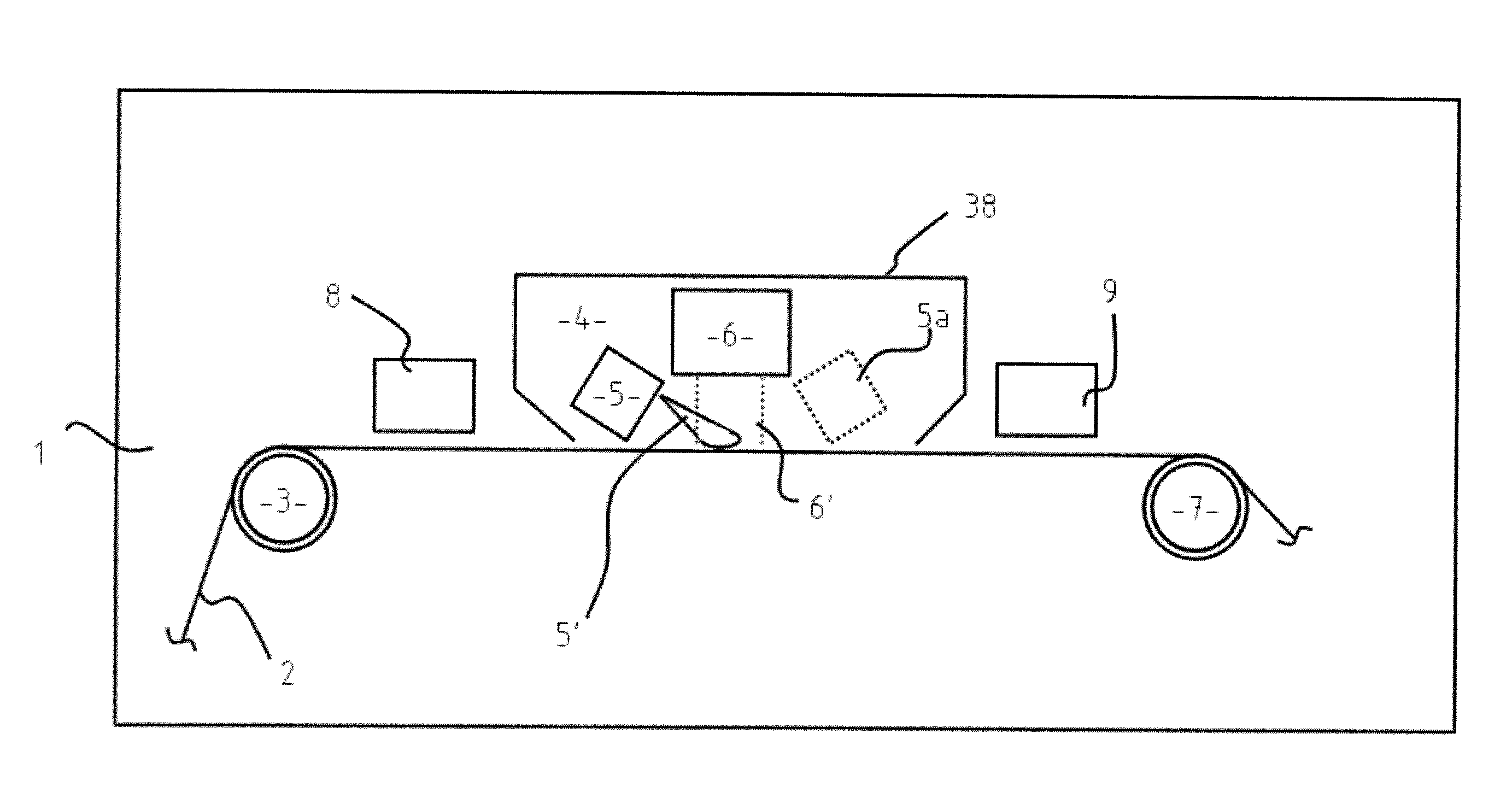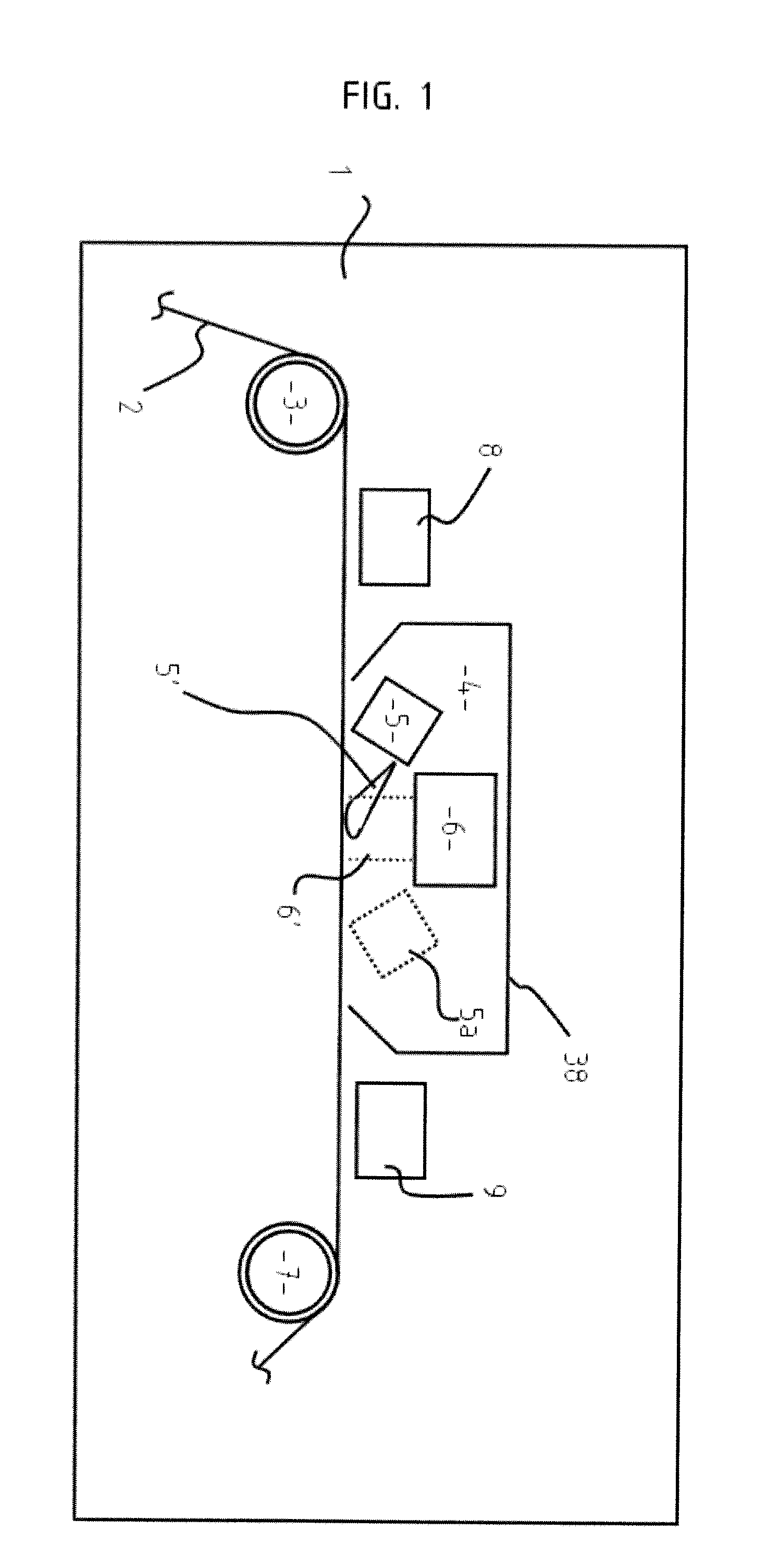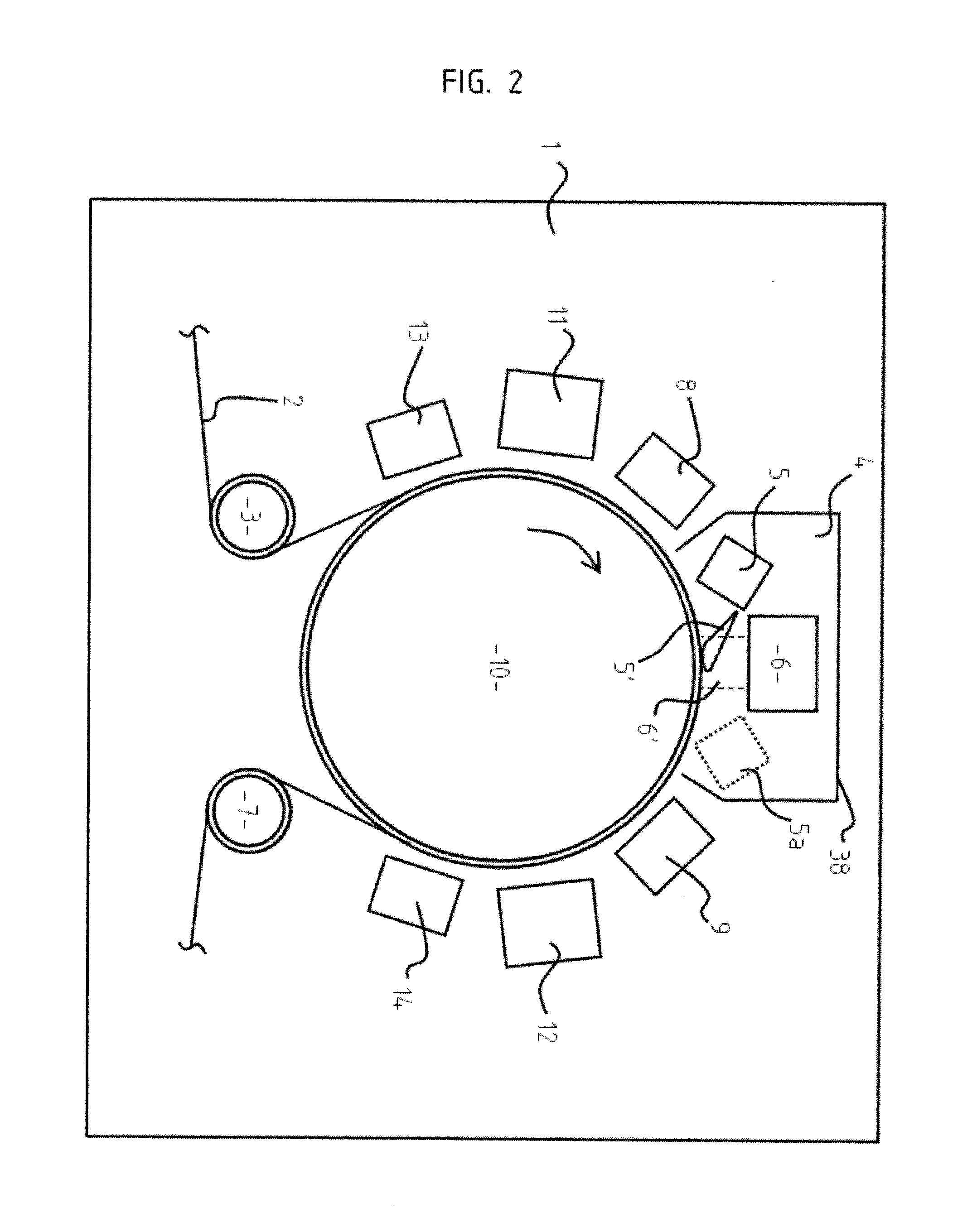Radiation-Cured Coatings
a technology of coating and curing process, applied in the direction of plasma technique, electrical apparatus, electric discharge tube, etc., can solve the problems of contaminating the pump, contaminating the pump, and other problems inherent in the process, so as to improve the barrier to oxygen, other gases, odour or taint, and improve the effect of curing speed
- Summary
- Abstract
- Description
- Claims
- Application Information
AI Technical Summary
Benefits of technology
Problems solved by technology
Method used
Image
Examples
example 1
[0055]In this example, a planar magnetron low pressure plasma source was used for curing comprising an Edwards 75 mm planar magnetron and MDX DC power supply; in the treatment space, an acrylate delivery source was located between the plasma source and the substrate, and the delivery was directed away from the plasma source towards the substrate. The acrylate used was tripropylene glycol diacrylate TRPGDA. The substrate was static for deposition and curing. A single hole heated precursor delivery pipe was placed in-front of the source facing toward the substrate, as in the manner of FIGS. 5a, 5b. The pipe was heated using a variable heating supply 200 watts at 240 volt (mark space modulation, 10% duty cycle) for 8 minutes. The cathode was run in constant current mode at a current of 200 mA using residual ambient air at 6×10−2 mbar. 8 ml of material was delivered in 3 seconds and the resulting substrates were coated with cured acrylate that had excellent adhesion.
example 2
[0056]In this example, two dual planar magnetrons were used with plasma delivery between them in the manner of FIG. 6. Power was supplied by a DC magnetron power supply unit. The PID controlled heated pipe had internal baffles, and the precursor TRPGDA was delivered to the pipe on the opposite side to the moving web. A 30 mm slot machined in the pipe facing the moving web provides the output precursor beam. With DC powers in excess of 200 watts on the two 2 inch diameter cathodes, these were arranged 60 mm above the 150 mm coating drum that carries the moving web. At pressures of 2×10−2 mbar of argon and the 20 mm diameter heated delivery pipe fitted within the 25 mm space between the cathodes and, with the 20 mm slot positioned 50 mm from the web, 0.2 ml of precursor was delivered in 1.5 minutes through the 20 mm slot aligned to intersect with a substantial proportion of the electron flux from the two cathodes at the substrate surface. The substrate was coated at 30 meters per minu...
example 3
[0057]In this example, the apparatus of FIGS. 5a and 5b was used. The plasma source is a 4 inch sputter cathode with very weak magnetic field and a 6 inch (oversize) reaction plate. The precursor source comprised a heated precursor delivery pipe (¾ inch diameter) with 4 mm exit aperture in-front of the 6 inch cathode surface, centrally mounted with exit aperture facing the web 20 mm below cathode, 30 mm from the web surface and using oxygen / nitrogen atmosphere at 3×10−1 mbar. The cathode was run at 150 watts and the pipe heated to 260 degrees C. with the delivery of liquid acrylate 4 inches away from the 4 mm pipe exit and 180 degrees opposite the exit aperture. The acrylate was delivered through a needle metering valve and the resulting coating was well cured acrylate deposition with excellent adhesion and good uniformity in the machine and transverse directions.
PUM
| Property | Measurement | Unit |
|---|---|---|
| Mass | aaaaa | aaaaa |
| Energy | aaaaa | aaaaa |
| Energy | aaaaa | aaaaa |
Abstract
Description
Claims
Application Information
 Login to View More
Login to View More - R&D
- Intellectual Property
- Life Sciences
- Materials
- Tech Scout
- Unparalleled Data Quality
- Higher Quality Content
- 60% Fewer Hallucinations
Browse by: Latest US Patents, China's latest patents, Technical Efficacy Thesaurus, Application Domain, Technology Topic, Popular Technical Reports.
© 2025 PatSnap. All rights reserved.Legal|Privacy policy|Modern Slavery Act Transparency Statement|Sitemap|About US| Contact US: help@patsnap.com



